Follow this guide to compost like a pro with your curbside composting collection service from Austin Resource Recovery.
Residents of multifamily properties have access to commercial composting collection through their property management.
Use your green composting cart
 |
Step 1Place food scraps, food-soiled paper, yard trimmings and natural fibers into your green composting cart. If it grows, it goes! Step 2Set out your green cart every week by 5:30 a.m. on your collection day, even if it isn’t full. Step 3Make sure everything fits in the green cart with the lid closed, and keep the lid closed at all times. |
Learn what goes into your green composting cart; if it grows, it goes
- Food scraps
-

Cooked or raw meat, poultry and seafood (including bones), cheese, dairy products, fruits, vegetables, grains, pasta, eggshells, bread, coffee grounds, tea bags, tea leaves, baked goods, nuts, jelly, candy, snack foods, leftovers, spoiled food.
Collection tips
- Use a kitchen collector to collect materials right in your kitchen.
- Place in a BPI-certified compostable bag, a paper bag, or another paper collector.
Compost more curbside
Because the City's material is processed at a commercial facility, the compost pile heats to very high temperatures, which can break down items like meat, dairy, seafood, seafood shells and bones, which typically cannot break down in a backyard compost pile. Even if you already compost at home, add these items to your cart and they can be composted.
Keep these items out
Do not include liquids, fats, oils, grease, plastic, glass, metals, styrofoam.
- Yard trimmings
-
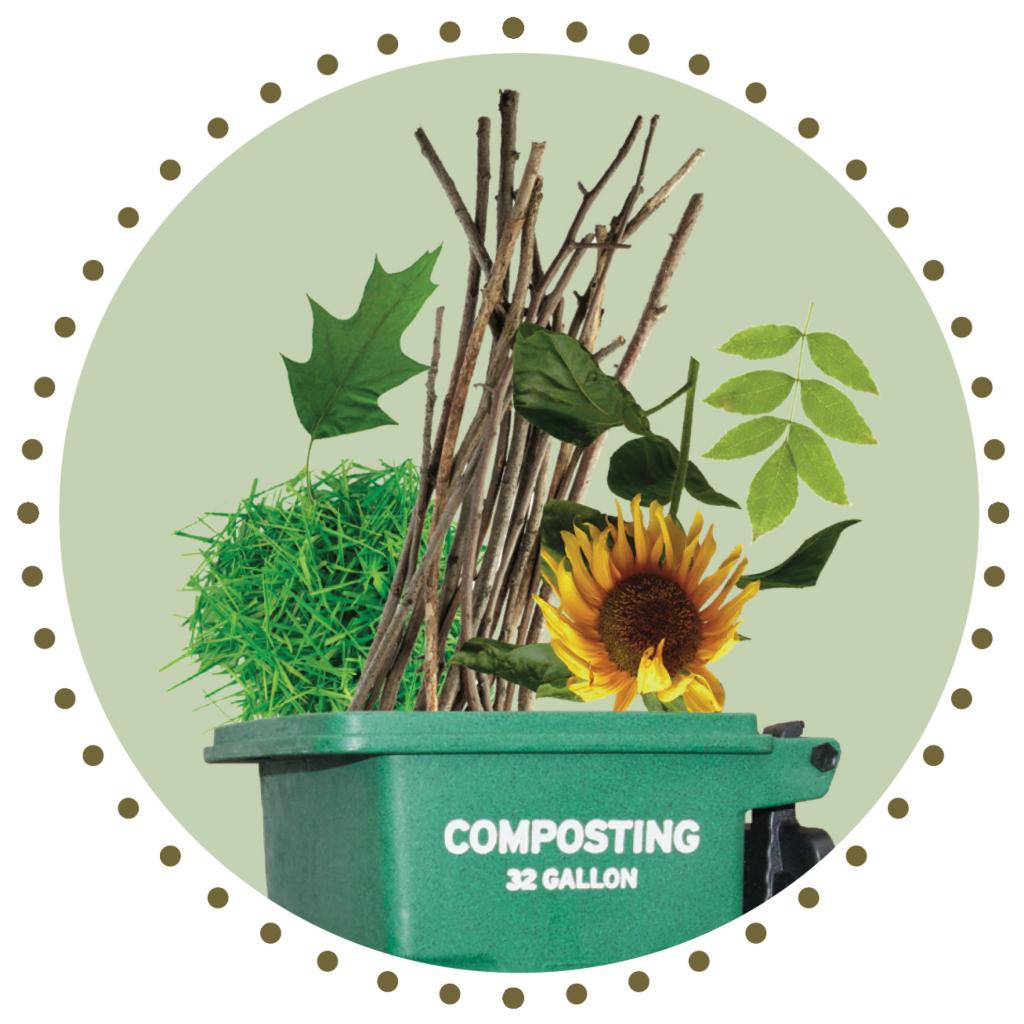
Grass clippings, small branches, small tree limbs, tree roots, flowers, leaves, plants, straw.
Collection tips
- Fill your cart first.Place yard trimmings directly in your cart (loose or in paper bags). Ensure the lid closes.
- If you are unable to fit all of your yard trimmings in your cart, bag extra yard trimmings in lawn-and-leaf paper bags and place at the curb next to your cart.
- Bundle and place small branches and tree limbs (no longer than five feet, and no wider than three inches in diameter) at the curb.
Keep these items out
Do not include rocks, soil, tree stumps.
- Food-soiled paper
-
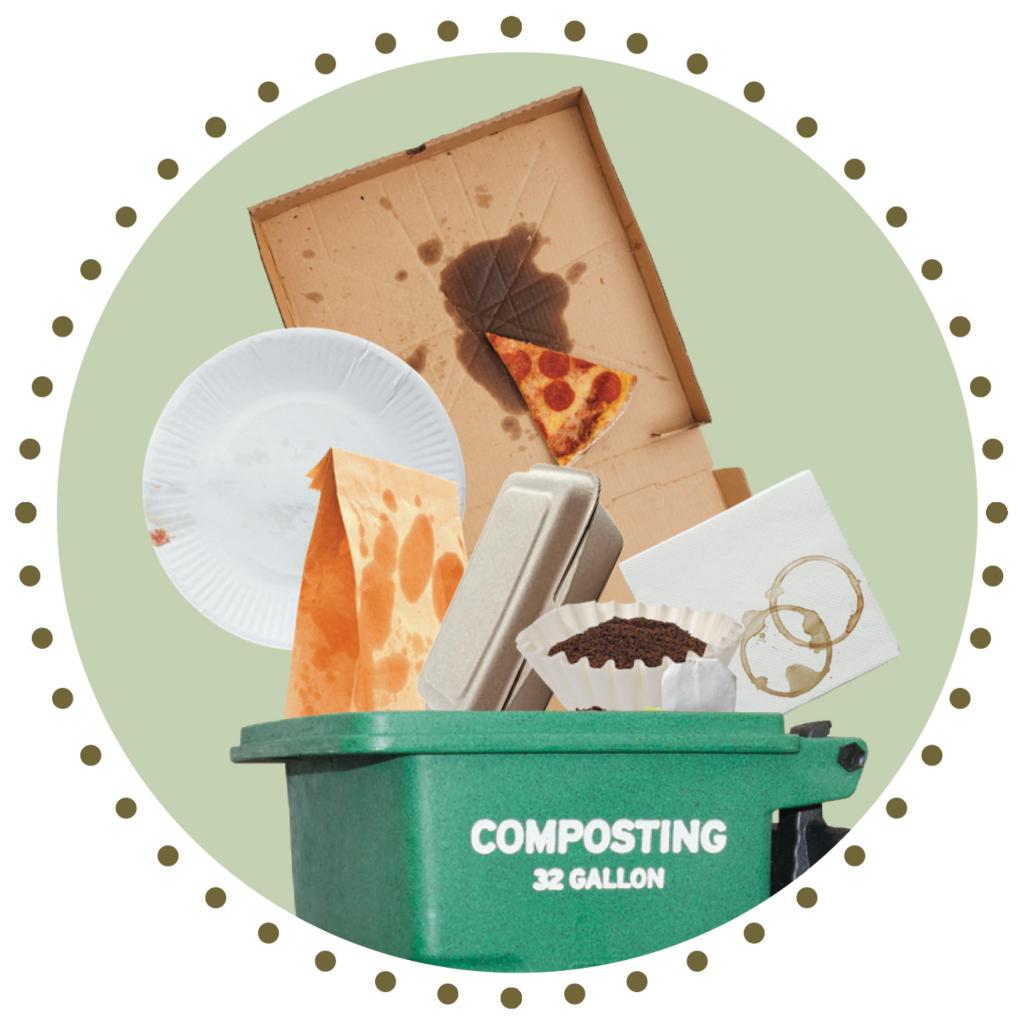
Paper bags, paper napkins, paper towels, paper plates, paper cups, paper take-out containers and take-out boxes (with no plastic or wax coating, and with metal removed), pizza boxes, coffee filters, microwavable popcorn bags, newspaper, tissues.
Collection tips
- Paper can be dry or wet.
- Place directly in your green cart, or place in a paper bag.
Keep these items out
Do not include glossy paper or window envelopes; recycle these items in your blue cart instead. Always place clean paper products in your recycling cart so they can be recycled into new paper products.
- Natural fibers
-
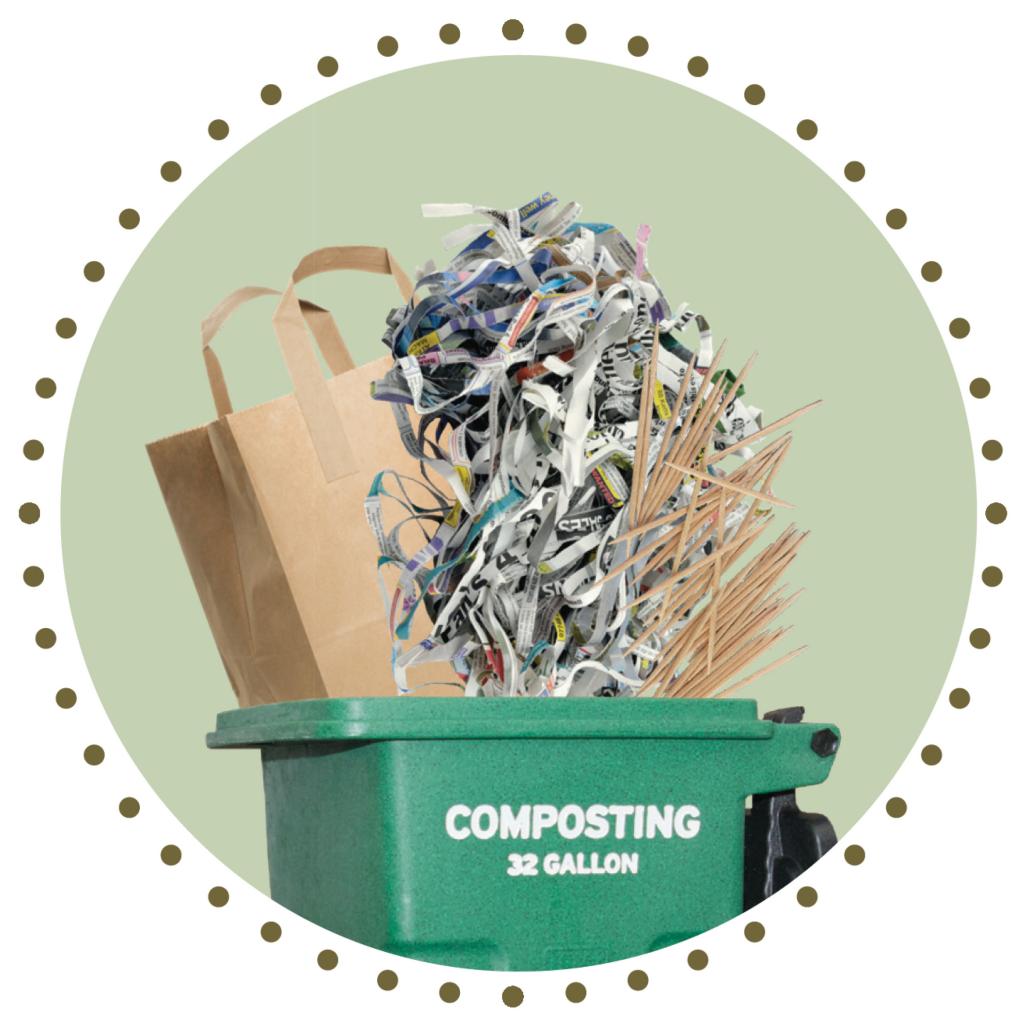
Popsicle sticks, sawdust (in paper bags), shredded paper, toothpicks, wooden chopsticks, untreated wood.
Collection tips
Place directly in your green cart, or place in a paper bag.
Keep these items out
Do not include cotton balls, cotton swabs or treated wood.
Keep these out of your green cart
Unaccepted items do not break down naturally and cause significant problems for the composting process. Some items also cause a safety hazard for collection and material processing crews. It's important to keep unaccepted items out of your green cart so they do not contaminate the compost or cause injury.
|
|
Make collecting food scraps easier with a kitchen collector
A coffee can, food storage container or any other reusable container can be used as a mini compost collector in your kitchen. Collect food scraps in this container to easily set aside material for your green composting cart.
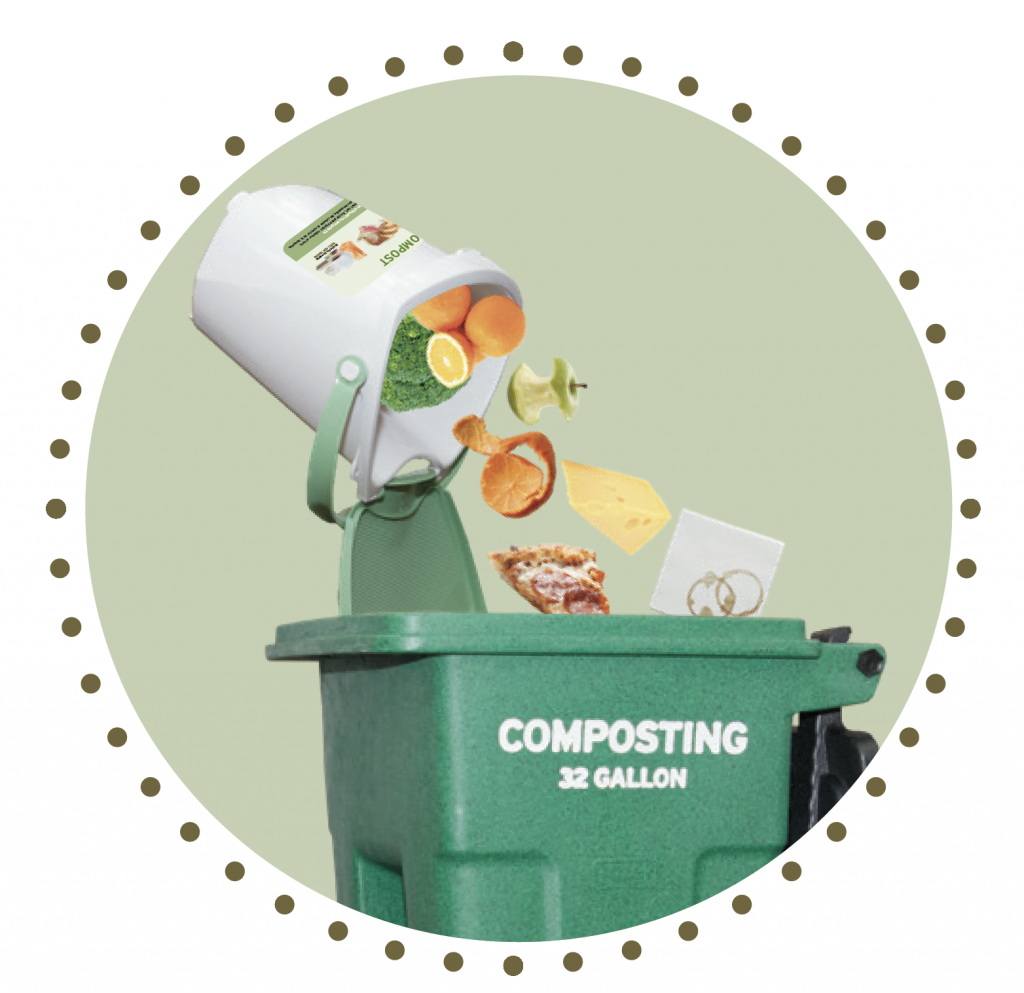
- Keep your kitchen collector in a convenient location in your kitchen, such as on the countertop, under the sink or in the freezer.
- While cooking or cleaning up, place leftover food scraps and food-soiled paper into your kitchen collector.
- Empty the contents of your kitchen collector into your green cart before you set out the cart each week.
Keep everything clean
Follow these tips to help reduce odors, moisture and pests in your green cart and kitchen collector.
- Sprinkle baking soda inside of the green cart and kitchen collector.
- Collect food scraps in a BPI-certified compostable bag, paper bag or small cardboard box; or wrap food scraps in a paper towel or newspaper to absorb moisture and manage odors.
BPI-Certified compostable bags have been tested and approved by Biodegradable Products Institute scientists to ensure they will break down completely, quickly and safely during the composting process. Look for the BPI logo on the box (or ASTM-D6400 posted in product details) when purchasing compostable bags and other compostable items. If the compostable bags or item you want to purchase does not list this certification, it may not actually be compostable. There is marketing out there for “biodegradable” products, but unless they meet the standard above, they are not accepted at the facility.
The following stores have reported carrying compostable bags for sale: Bed Bath & Beyond, Costco, H-E-B, in.gredients, Natural Grocers, Sam's Club, Sprouts, Target, Wal-Mart and Wheatsville. Inclusion in this list does not constitute an endorsement or recommendation of any particular business by Austin Resource Recovery or the City of Austin. Austin Resource Recovery does not guarantee that businesses will have bags in stock at any given time.
- Consider freezing food scraps like meat, poultry and fish in your kitchen collector or another reusable container, paper or BPI-certified compostable bag until it’s time to place scraps in your green cart.
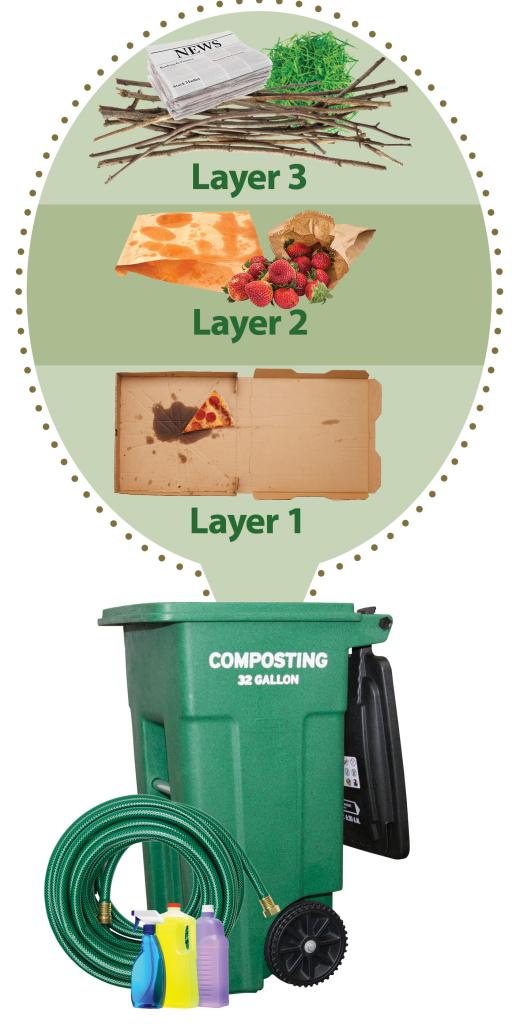 |
|
Learn how your other collections are affected
Yard Trimmings
Yard trimmings will now be part of your composting collection. Place grass clippings, leaves and small branches directly into your green composting cart. Once your cart is full, use lawn and leaf bags or a reusable container that is no larger than 34-gallons and no heavier than 50 pounds for any excess material, and place them beside the cart. Austin Resource Recovery will collect the contents of your green cart and up to 15 extra items placed beside the cart. Compost material must fit into your green cart with the lid closed – each bundle, bag, and container counts as a separate item toward the limit.
Trash
Instead of placing food scraps and food-soiled paper into your brown trash cart, place them into your green composting cart.
Save money with your green cart
Now, you will likely have less trash to throw away each week. Consider downsizing to a smaller, less expensive trash cart and save money on your monthly utility bill. We offer four trash cart sizes; the smaller the cart, the less it costs.
Recycling
There will be no changes to recycling. Continue to place recyclables like hard plastics, glass, metals, cardboard and paper into your blue recycling cart.
Learn about the composting process
The materials in your green cart do not go to a landfill. They are composted into a natural resource!
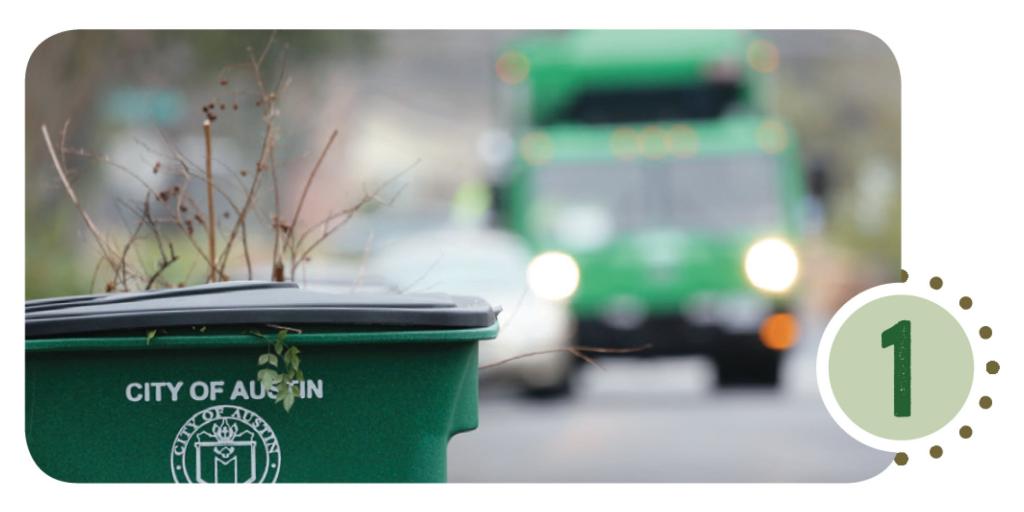 |
Austin Resource Recovery staff collects the material from your green composting cart and transports it to a local commercial composting facility. |
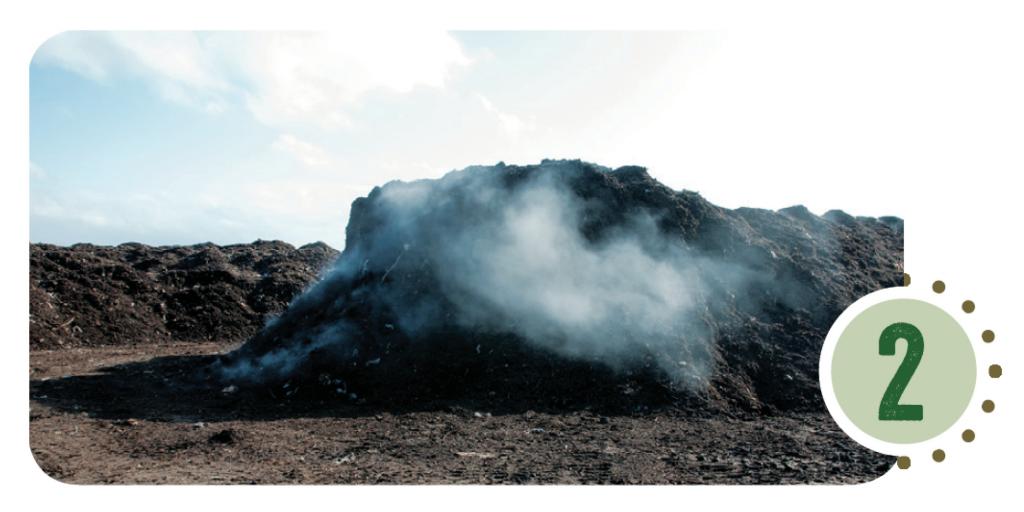 |
The material is placed in a large pile, where microorganisms begin to break it down and heat up the pile to very high temperatures. |
 |
After about 12 months, the material breaks down and is transformed into an earthy, soil-like material called compost. |
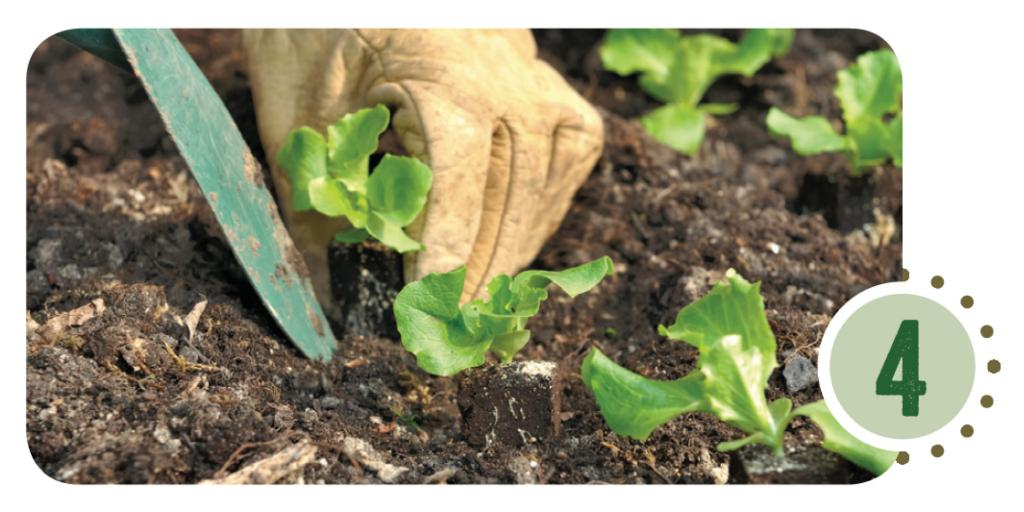 |
Compost is used to fertilize plants, gardens and other outdoor areas. |
Get a PDF version of this guide
You can download a PDF version of this guide in English or Spanish.

